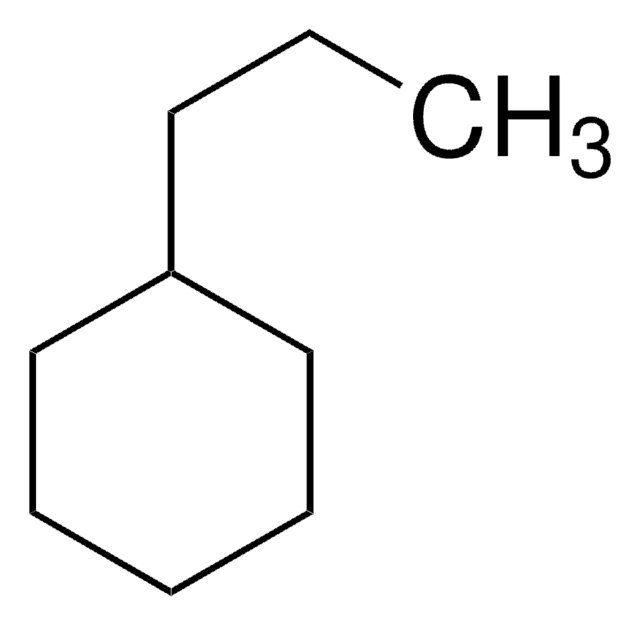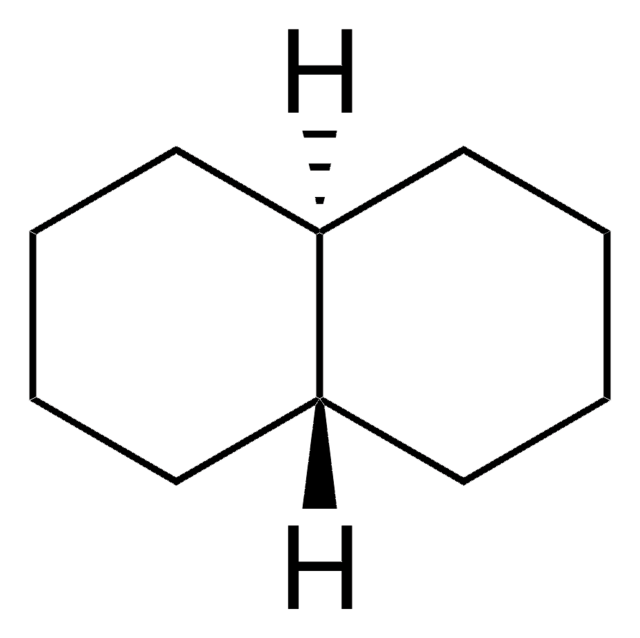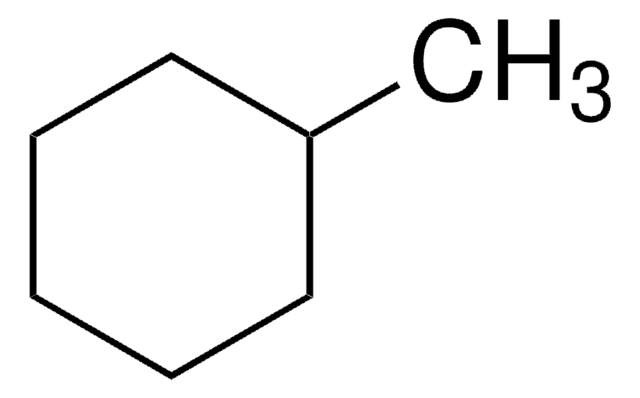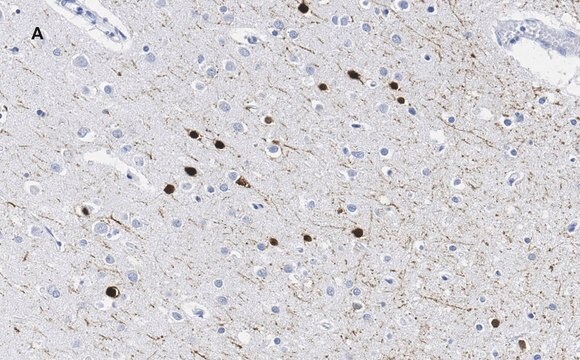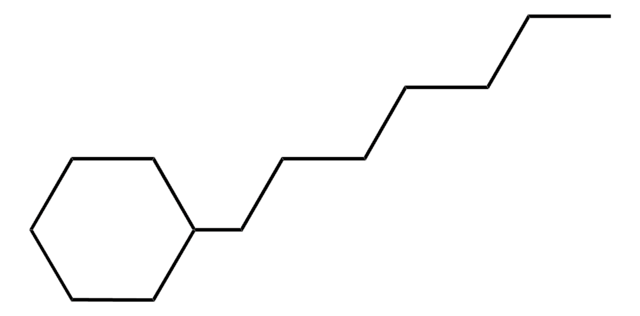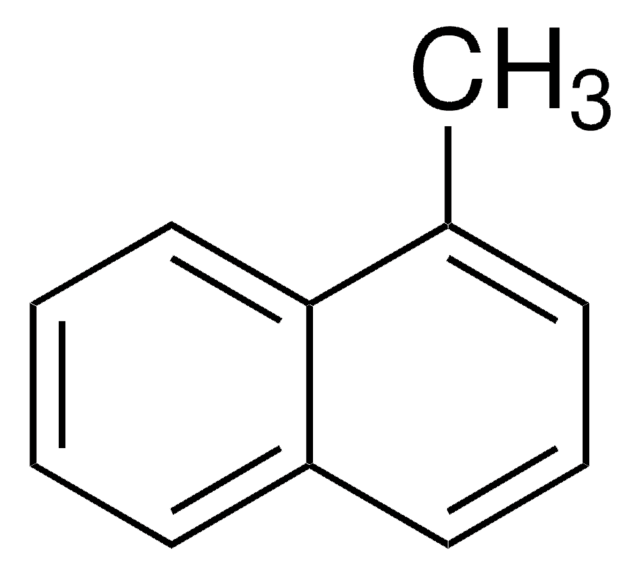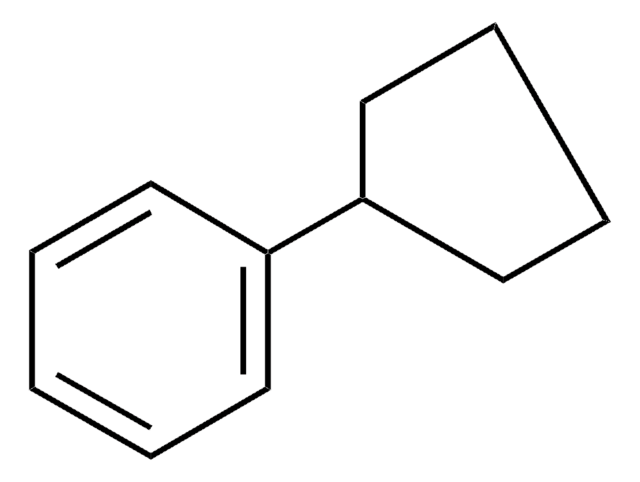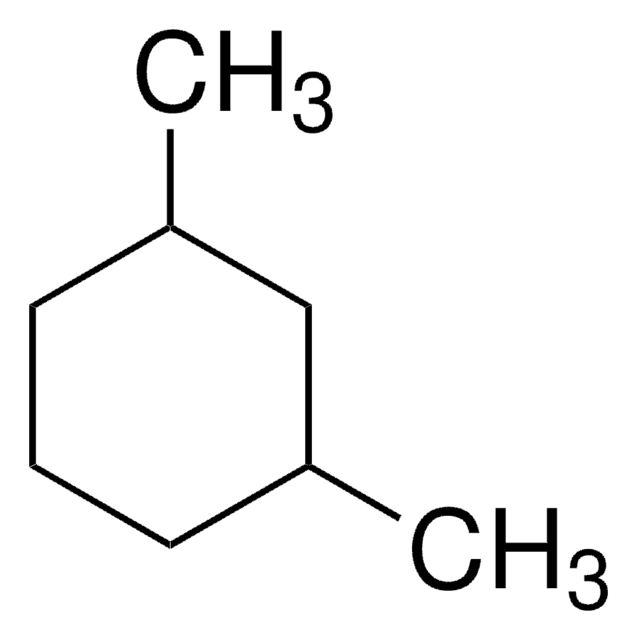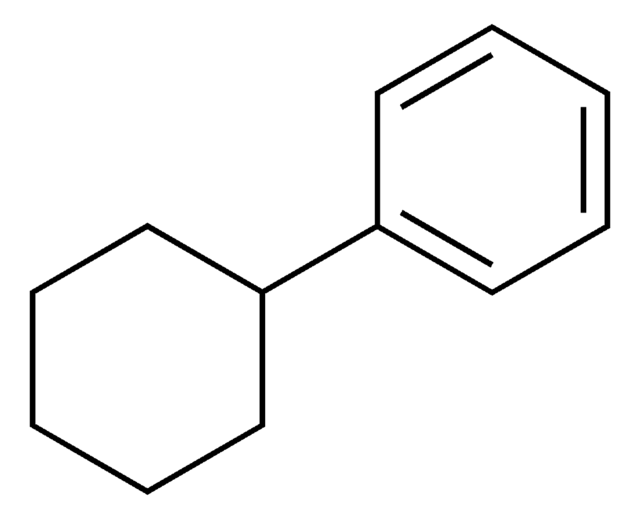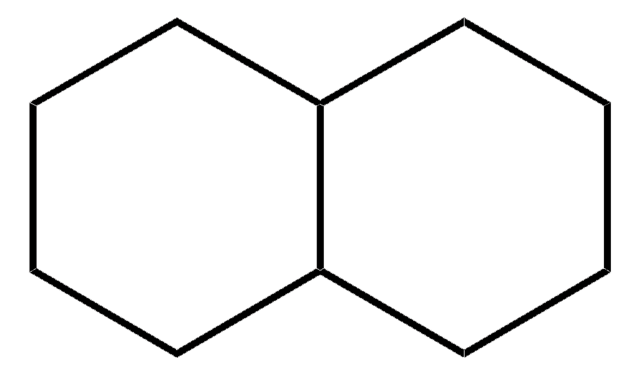110388
Butylcyclohexane
≥99%
Synonym(s):
1-Cyclohexylbutane
About This Item
Recommended Products
vapor pressure
2.9 mmHg ( 37.7 °C)
Assay
≥99%
autoignition temp.
475 °F
refractive index
n20/D 1.441 (lit.)
bp
178-180 °C (lit.)
mp
−78 °C (lit.)
density
0.818 g/mL at 25 °C (lit.)
SMILES string
CCCCC1CCCCC1
InChI
1S/C10H20/c1-2-3-7-10-8-5-4-6-9-10/h10H,2-9H2,1H3
InChI key
GGBJHURWWWLEQH-UHFFFAOYSA-N
Gene Information
human ... CYP1A2(1544)
Looking for similar products? Visit Product Comparison Guide
General description
Signal Word
Warning
Hazard Statements
Hazard Classifications
Flam. Liq. 3
Storage Class Code
3 - Flammable liquids
WGK
WGK 3
Flash Point(F)
105.8 °F - closed cup
Flash Point(C)
41 °C - closed cup
Personal Protective Equipment
Choose from one of the most recent versions:
Already Own This Product?
Find documentation for the products that you have recently purchased in the Document Library.
Customers Also Viewed
Protocols
-Xylene; Nonane; Decane; 1,2,4-Trimethylbenzene; Butylcyclohexane; Naphthalene
Our team of scientists has experience in all areas of research including Life Science, Material Science, Chemical Synthesis, Chromatography, Analytical and many others.
Contact Technical Service